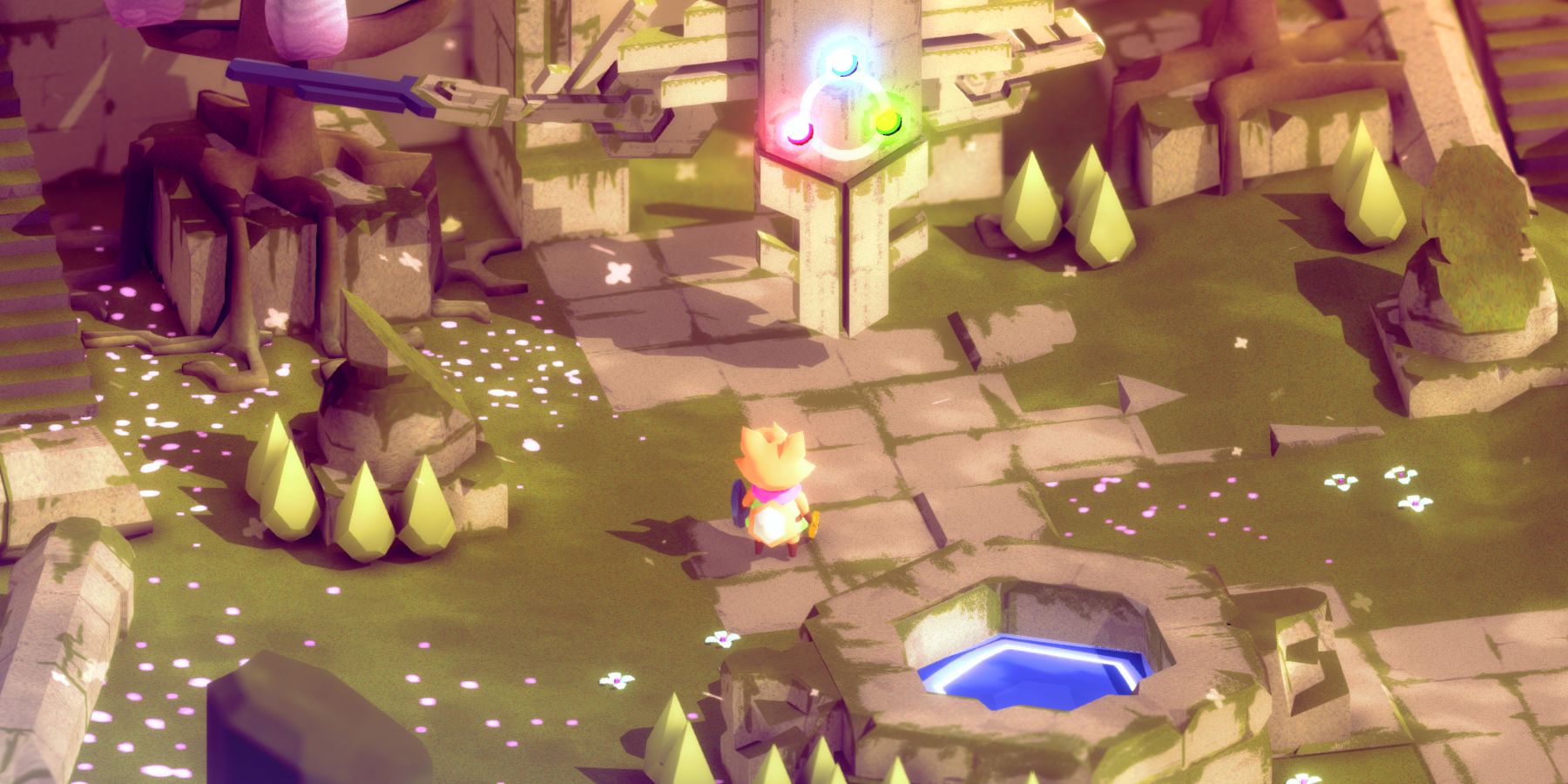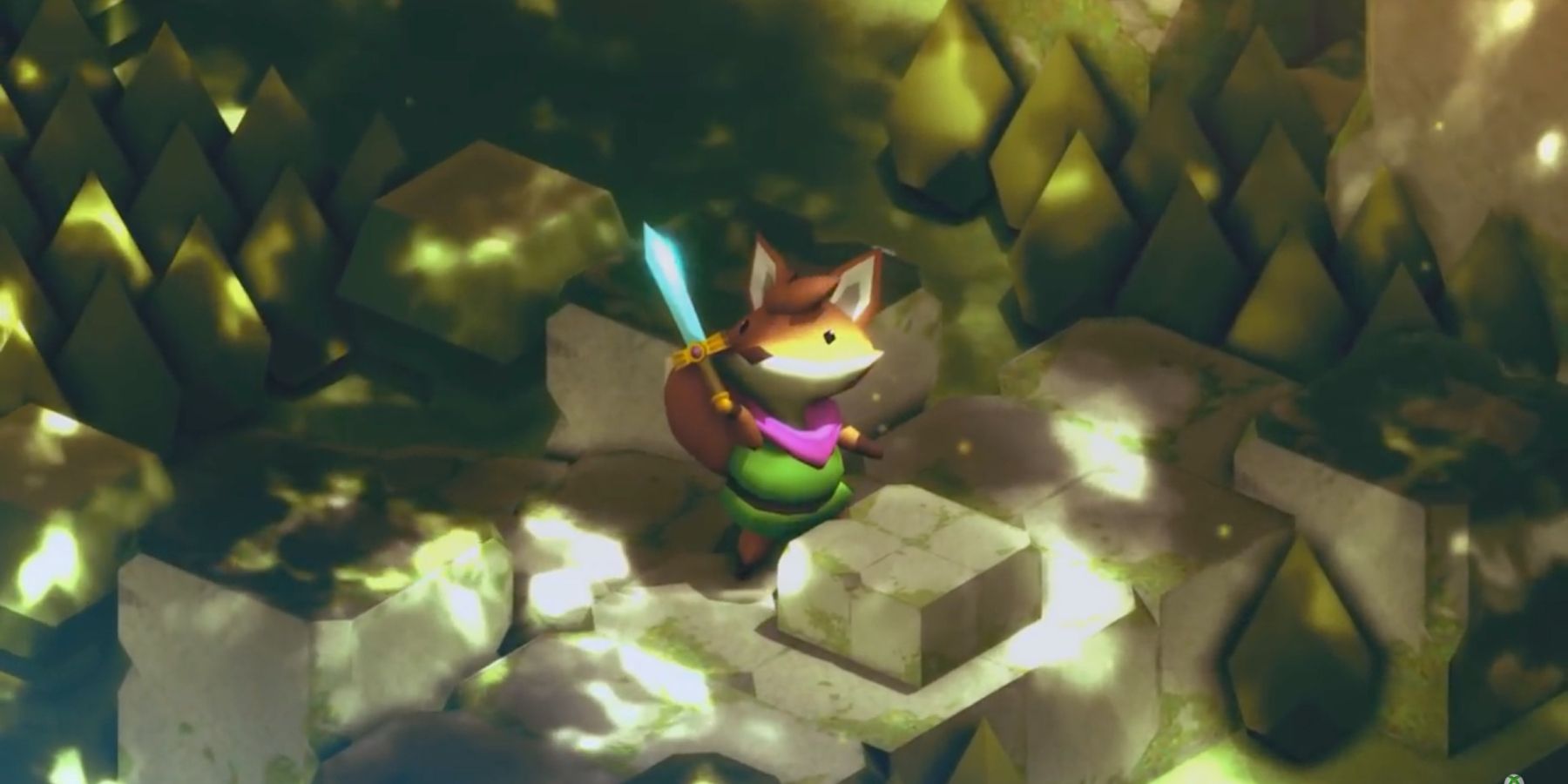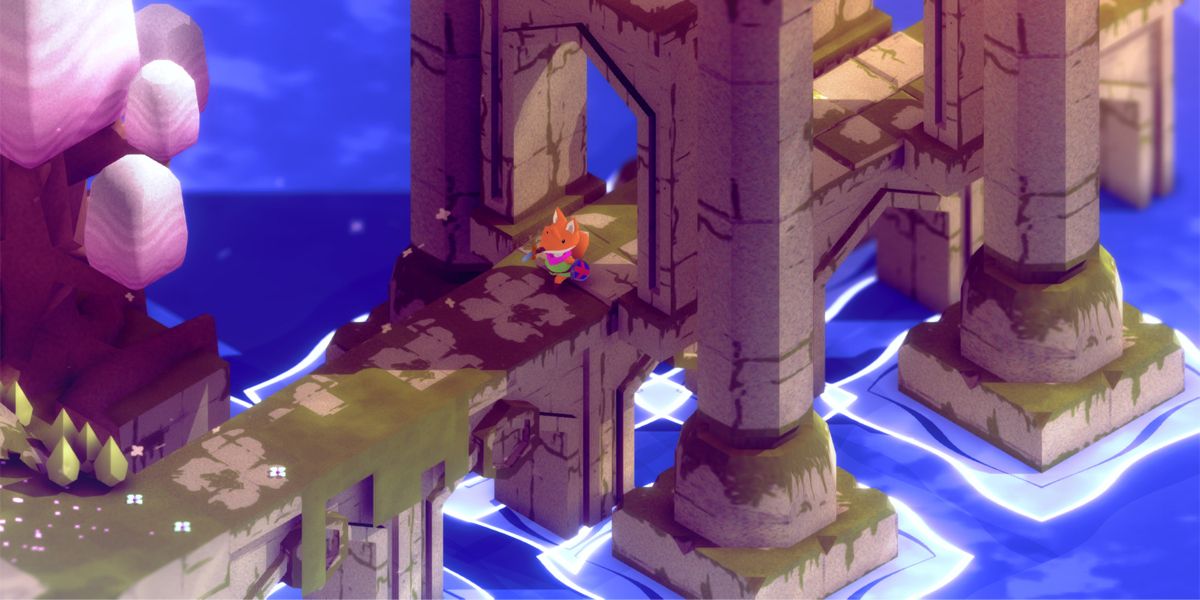After nearly seven years, the anticipated Zelda-like adventure Tunic is primed to launch in March. The game stars a tiny fox in a huge world full of monsters and mysteries, and has an engaging isometric art style with a carefully chosen color palette that seems to make the world glow. Yet, there is more to Tunic than its visuals. The title hopes to revitalize the wonder and intrigue of players' first video game experiences, drawing inspiration from the NES era of gaming where organic discovery reigned supreme.
Building a title that will kindle curiosity and awe, especially one based on a universally recognizable template like The Legend of Zelda, is no small feat. However, Tunic has already started to distinguish itself from its spiritual predecessors, even though the game has yet to be released. Lead developer Andrew Shouldice spoke with Game Rant about the impetus behind Tunic, his aspirations for the title, and his approach to designing opportunities for discovery.
Tunic Aims to Recapture Childlike Wonder
The Zelda formula is so ubiquitous and influential that Zelda-likes are starting to become an indie genre unto themselves. Like many developers, Shouldice's primary inspiration for making Tunic was the hope of recapturing the child-like glee of an early video game experience.
"The core of it was a desire to make a game that captured the same feelings of playing a game as a kid. Say, an NES game. Playing the game, flipping through the manual, and trying to understand this cryptic world. There are lots of games out there that try to evoke nostalgia because they look, and play, and sound like classic games. But it was really that feeling of wonder and exploring the unknown that I wanted to capture."
Despite this seemingly familiar premise and design motivation, Tunic has many fans excited, and the title's attempt to catalyze wonder may be a major factor. While the game's fox hero was received positively from the beginning, gamers also seem to be responding to the developer's sincerity. Shouldice's dedication to wonder and discovery is anything but lip service, as spoilers -even things as simple as the hero acquiring a shield - are a huge sticking point. Even Tunic's brief teaser trailer seems to have been a concession.
Tunic also features a novel manual mechanic, meant to imitate the physical instruction booklets packaged with early NES and Genesis-era titles. Players will encounter pages of Tunic's manual across the game's overworld, and these pages will impart useful advice, references (like maps), and tips for pulling off special techniques. But even this information doesn't come free; it is often obscured by untranslated script, or hidden in subtle details.
In-Game Discovery as Driving Socialization
Even though Tunic is a single-player affair, Shouldice argues that discovering things in games is an experience with an inherent potential for social interaction. Alluding to his favorite item in the game, Shouldice said that the tool is not crucial for progression. As a result, he believes discovering this unnamed item could easily serve as a topic of conversation between players.
"It’s the sort of thing where, if you are watching a stream - or if I am on the living room floor looking over my friend’s shoulder as they’re playing it on the CRTV in 1986 - it is whatever today’s equivalent to that experience is. It’s the thing where the person who sees it goes, 'Oh! What? Where did you get that?' And the player goes, 'Huh... Where did I get that?' Then they go and show them."
The nature of discovery calls to mind the old philosophical question of whether trees make a sound if nobody is there to hear them fall. Similarly, one might wonder if a player has made a real discovery unless they share it with other people. Shouldice feels the answers to both questions is arguably "yes," but there is no denying the inherent desire to share one's accomplishments. Finding details a friend may have missed or being the first to achieve something remarkable within a community can be inherently reminiscent of childhood wonder and curiosity. It can also have a much greater appeal than aesthetic trappings meant to evoke nostalgia.
Even if Tunic players never stream their findings or share their adventure with friends on a couch, the improvisational nature of Tunic transforms discovery into a dialogue between the player and creator, according to Shouldice. By design, Tunic encourages players to chart their own unique path through the game - which he said makes estimating a definitive playtime more challenging.
Transgressive Exploration in Tunic
In most Metroidvania titles and pre-Breath of the Wild Zelda-like games, usable items act as keys to unlock new routes through the game world. Shouldice admits this is a compelling loop, but he also offers Tunic as something of a rebuttal to that formula. Players can "transgress" in Tunic by heading to advanced or challenging areas via secret techniques, carefully acquired items, or discovering clever shortcuts. Again, he feels discovery makes all the difference, as this open-ended approach is a design decision that favors personal exploration and experimentation.
Now that people have sunk their teeth into Tunic's demo, fans are seeing that the game has more to offer than just Zelda starring a fox. Fortunately, they won't need to wait much longer before the discoveries can begin, as Tunic is finally preparring to wrap up its seven-year development cycle next month.
Tunic releases on March 16, 2022, for PC, Xbox One, and Xbox Series X/S.



